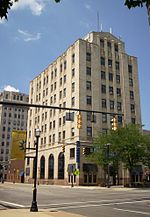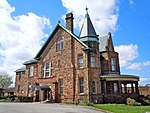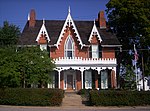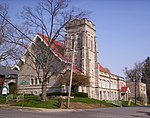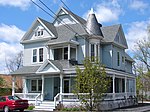Mansfield Memorial Museum

The Mansfield Memorial Museum, originally Soldiers and Sailors Memorial Hall, is in downtown Mansfield, Ohio. It was founded in 1887 and opened to the public in 1889 as the Soldiers and Sailors Memorial Hall. The museum's collections include various exhibits including Native American artifacts, American Civil War memorabilia, and collections from Asia and Africa. The museum originally housed a library and theater. Oscar Cobb of Chicago designed the building. The building was built by noted architect F.F. Schnitzer, and is listed on the National Register of Historic Places.The Grand Army of the Republic has space upstairs in the building.Elektro, an early robot, is part of the museum's collection.
Excerpt from the Wikipedia article Mansfield Memorial Museum (License: CC BY-SA 3.0, Authors, Images).Mansfield Memorial Museum
Park Avenue West, Mansfield
Geographical coordinates (GPS) Address External links Nearby Places Show on map
Geographical coordinates (GPS)
| Latitude | Longitude |
|---|---|
| N 40.75879 ° | E -82.51704 ° |
Address
Soldiers and Sailors Memorial Building
Park Avenue West 36
44902 Mansfield
Ohio, United States
Open on Google Maps

